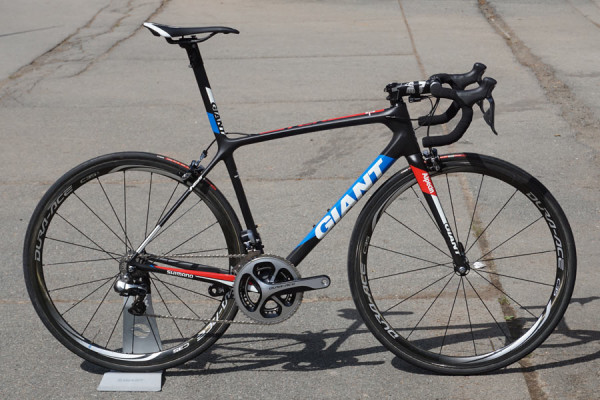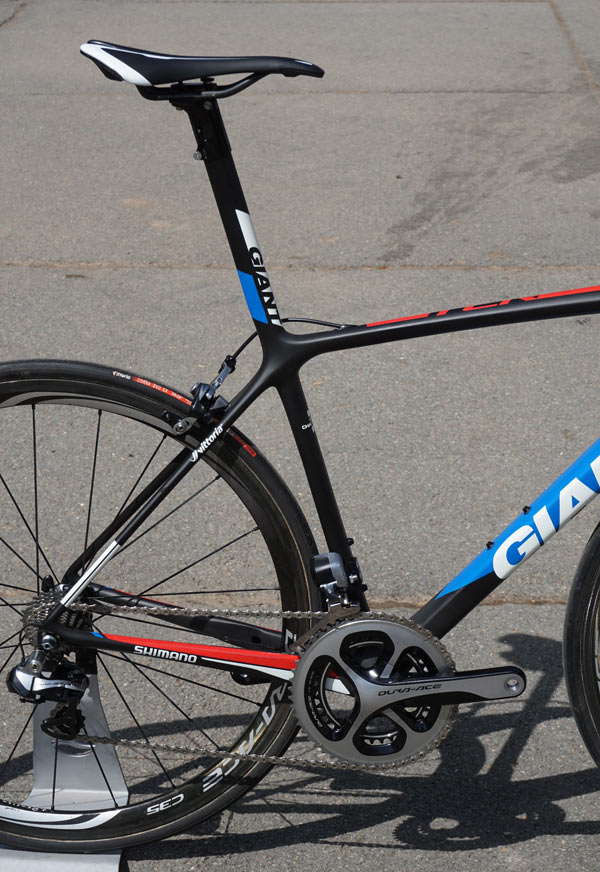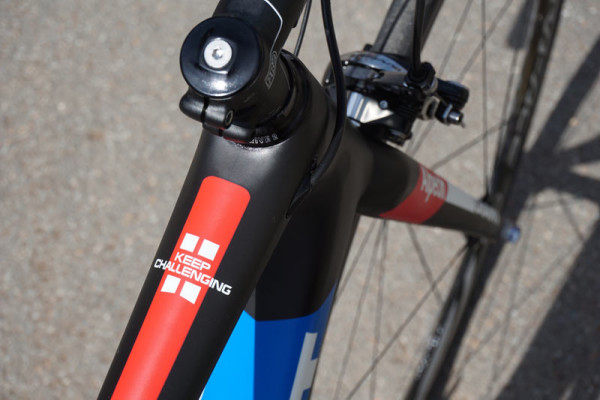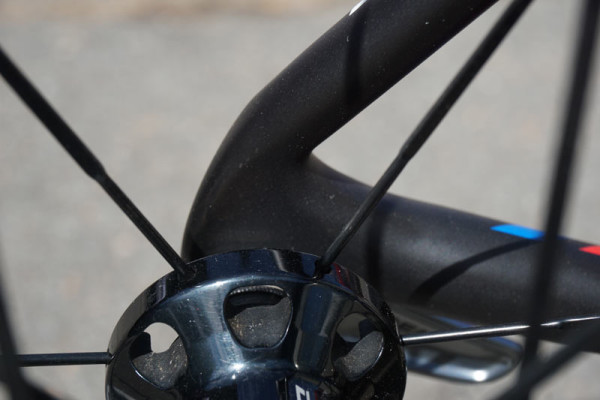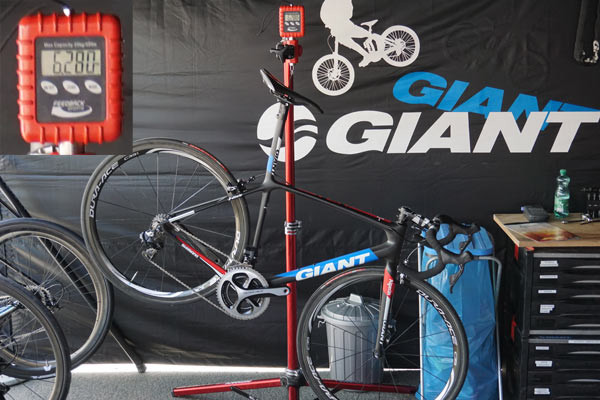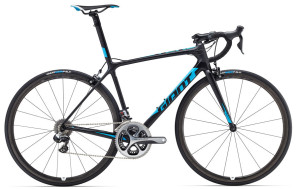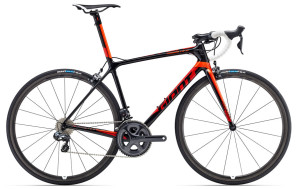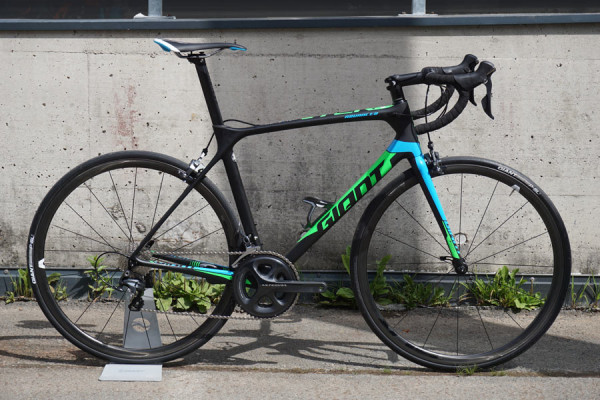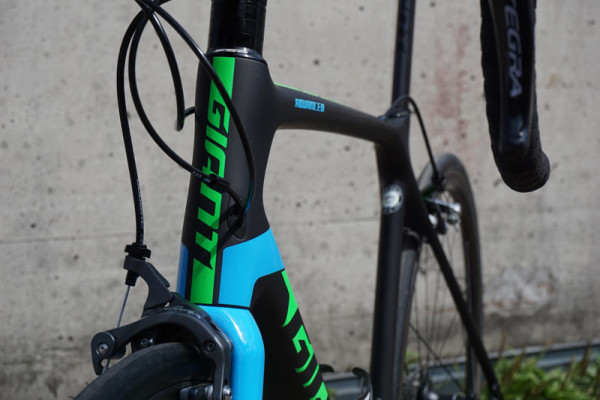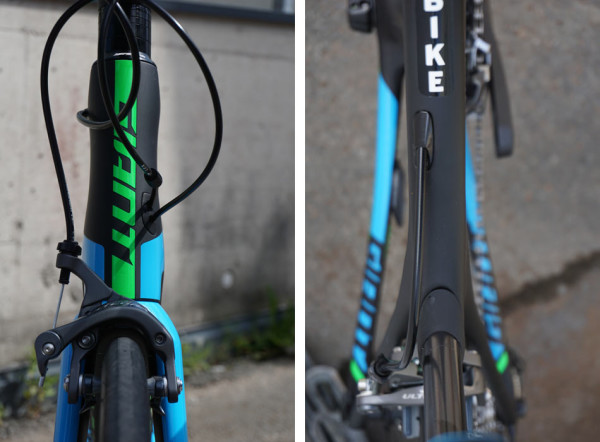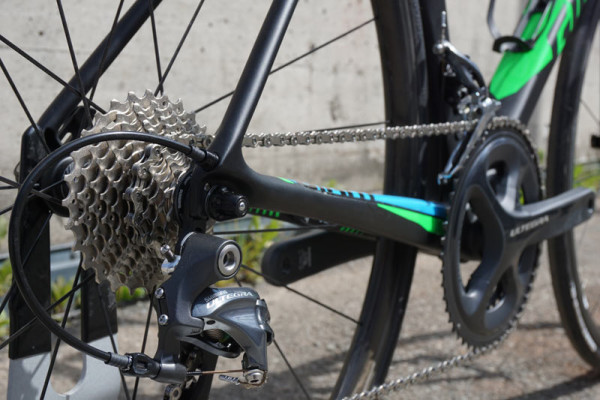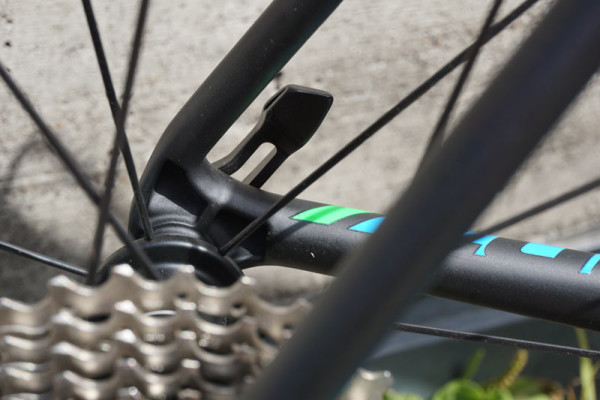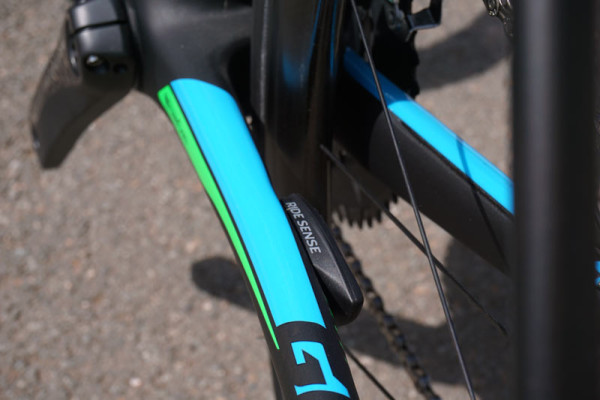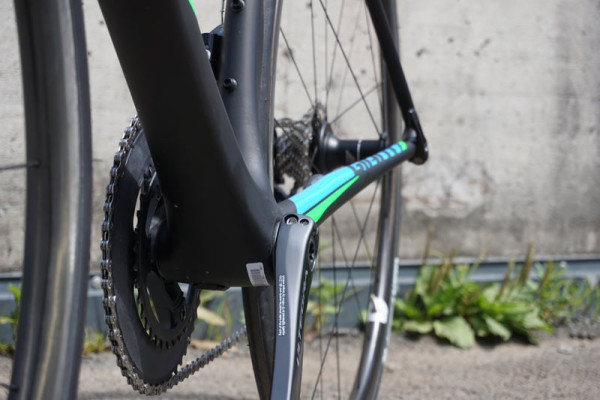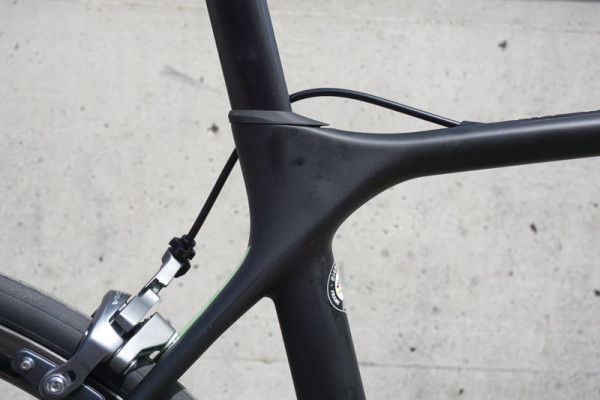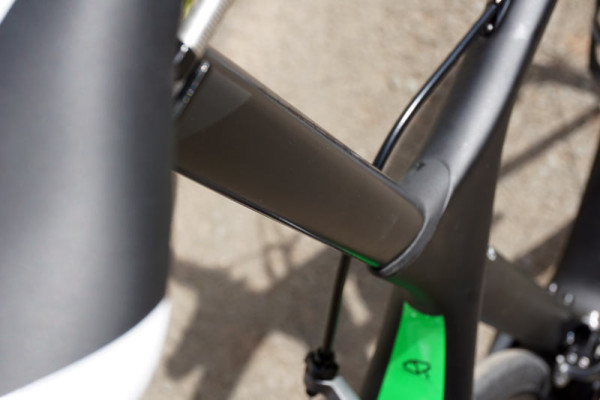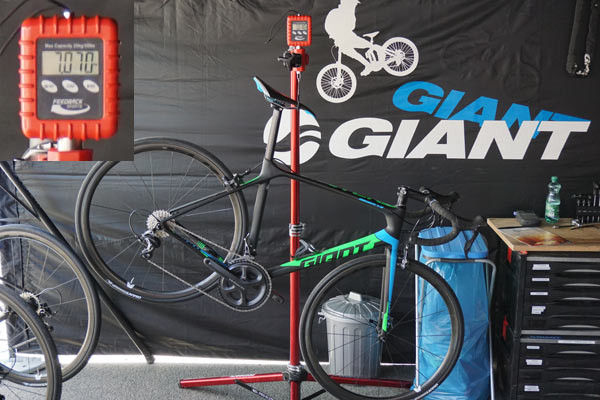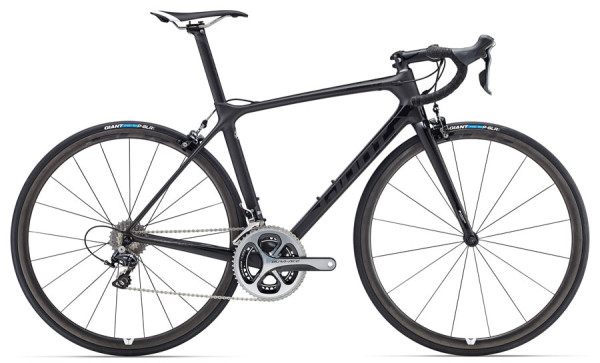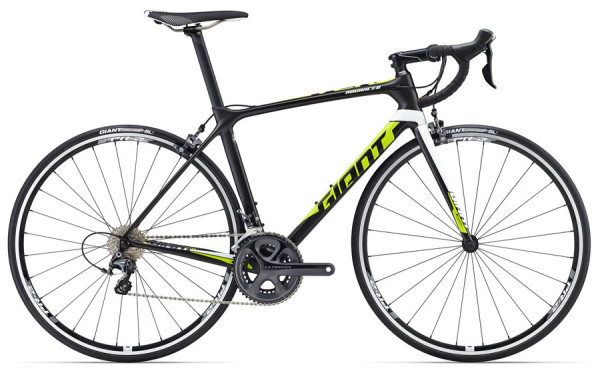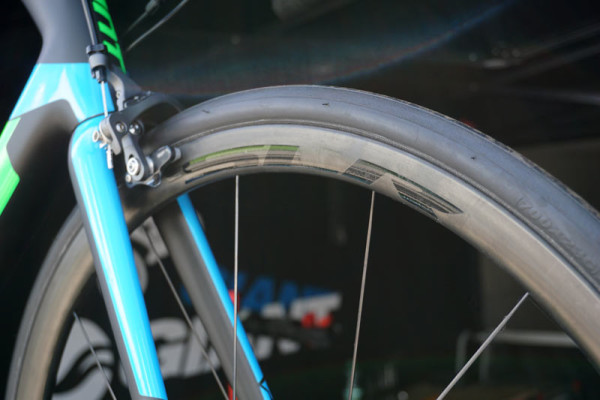The 2016 Giant TCR road bike fills the gap between the Propel aero bike and Defy endurance road bike with an all-new design that claims to be the “Total Race Bike.”
As a carbon frame, all models carry the Advanced moniker, and it’ll be available in three frame tiers -Advanced SL, Advanced Pro and just plain Advanced. And as any self respecting top-level road bike debuting in 2016 must, it makes all the important claims of being lighter, more compliant and more efficient. The only buzz phrase left out is “more aero.”
Most of the technology story is centered on the SL model, with Giant’s testing showing it bests its main competitors in frameset stiffness, stiffness to weight ratio and complete bike-with-wheels stiffness when paired with their new SLR 0 carbon wheels.
And it does all that while dropping 181g off the prior model’s frameset weight with plenty of newness trickling down to the others…
The SL frame, shown here in Team Giant-Alpecin livery, has a higher mod carbon mix and different layup than the others. And it gets an integrated seat mast, which lets them better control the overall feel of the bike and tune the compliance as a system. It saves a bit of weight compared to the shaped seatpost used on the others, too.
To knock 12% off the prior model’s frame weight, they had to pull material out wherever they could. Other weight savings were done at the fork by reshaping the steerer’s taper and whittling away the legs, helping it drop 30g.
One last little touch was to give the SL hollow carbon dropouts. Since this is the team frame, which you can’t buy, we’ll touch on other new features on the Pro model below. But first, some tidbits loosely related to team gear:
For 2016, there’ll be no disc brake version because they say that tech is more for the endurance rider than the TCR rider. So, it’s looking like they’ll ride the Defy disc for any UCI test races this year…until model year 2017, which is when they’re considering a disc brake TCR. If this sounds familiar, it’s because it’s the same story we heard just before their team received the new disc brake cyclocross bikes a few years back.
While you can’t buy this particular model, it’s still fun to see what it weighs (6.28kg / 13.84lb). That’s with the internal seatpost battery, which uses a custom mount to fit inside the top of the seatmast. Rest of the build is Shimano Dura-Ace and PRO cockpit parts with one of Giant’s new Contact SL saddles.
The ones you can buy are the SL 0 on left with Dura-Ace Di2 and the SL 1 on right with Ultegra Di2. Both use new carbon wheels from Giant. (click any image to enlarge)
One that you can buy as shown is this Pro model, outfitted with Ultegra mechanical and a full Giant cockpit, wheels and tires.
In addition to the new full carbon fork, which is shared between the SL and Pro, the lower headset bearing was moved a bit higher inside the headtube, which they say better directs forces coming from the fork into the massive downtube rather than up to the rider.
The shape of the downtube and BB shell is similar to before because it worked. Everything else was slimmed down considerably. The top tube (shown on right, looking down from nose of saddle) looks anemic, yet they were able to turn out some impressive frame stiffness numbers.
While some pro-level bikes have been leaving the cables outboard for easier maintenance, Giant’s putting them all inside the frame. No biggie, because if we’re honest, pretty much everyone in the pro peloton will be running electronic soon anyway. For the rest of us, it makes for a much better looking bike.
The Pro and standard TCR Advanced get chiseled alloy dropouts bonded into the stays instead of hollow full carbon.
The bikes are compatible with their Ride Sense ANT+ speed and cadence sensor.
Rider comfort is addressed by sending the seatstays lower into the frame and carrying them more toward the top tube rather than straight up the seat post.
Prior models used their Vector seatpost with a pointed, tear drop shape that was aero but not very compliant. This new shape is called Variant, which still has a tear drop shape but is slightly rounded at the back so it’ll flex better. The shape is mimicked on the SL’s seatmast, too.
The M/L size TCR Advanced Pro 1 comes in at 7.07kg (15.59lb) without pedals.
The Pro 0 model upgrades to Dura-Ace mechanical.
The standard TCR Advanced Comp 1 uses the same shape fork but with an alloy steerer and carbon legs. It gets Giant’s PR-2 alloy wheels and an Ultegra mechanical group.
To complete the bike system, Giant updated their SLR wheels and now includes their own proprietary SLR brake pads to maximize performance. Two carbon versions will be offered in this 30mm “climbing” depth that’s 23mm wide – the SLR 0 and 1, with the difference being at the hubs and spokes. The rims are tubeless ready and Giant says they test out with one of the highest temperature handling figures around so they’ll hold up under extreme, continuous braking.
The SLR 1 uses Sapim Race stainless steel straight pull double butted spokes and a standard pawl driver mechanism. Weight is 1,425g, retail is $1,300.
The SLR 0 upgrades to a DT Swiss Star Ratchet system with DT Aerolite bladed spokes. Weight is 1,335g, retail is $2,300.
